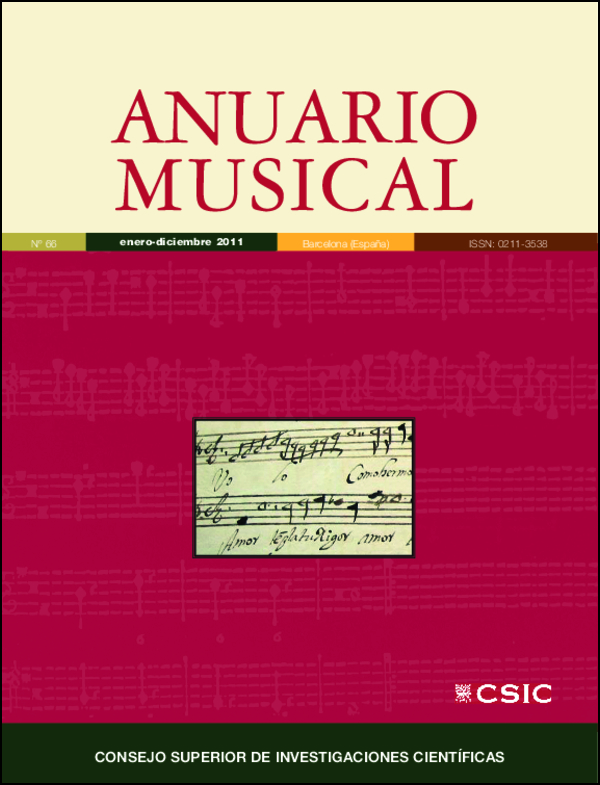Wagnerian Movement in Murcia (1879-1922)
DOI:
https://doi.org/10.3989/anuariomusical.2011.66.130Keywords:
Wagner, Murcia, 19th Century, Opera, Press, Critical ReviewAbstract
The Wagnerian movement in Murcia had to overcome some initial resistance. Nonetheless, this movement would have the same characteristics as in other places: a bourgeois, urban movement linked to the idea of modernity and progress. Two stages can be distinguished in the assimilation of Wagnerian music in Murcia. The fi rst stage, in which Wagner’s music is more often read than played; this initial phase would end with the representation in 1890 of the opera Lohengrin in Murcia. In the second stage, the audience in Murcia would have the opportunity to enjoy a more symphonic Wagner thanks to the work of symphonic musical ensembles (bands and chamber groups) and the concerts offered (from 1910) by the Orquesta Sinfónica de Madrid.
Downloads
Downloads
Published
How to Cite
Issue
Section
License
Copyright (c) 2011 Consejo Superior de Investigaciones Científicas (CSIC)

This work is licensed under a Creative Commons Attribution 4.0 International License.
© CSIC. Manuscripts published in both the print and online versions of this journal are the property of the Consejo Superior de Investigaciones Científicas, and quoting this source is a requirement for any partial or full reproduction.
All contents of this electronic edition, except where otherwise noted, are distributed under a Creative Commons Attribution 4.0 International (CC BY 4.0) licence. You may read the basic information and the legal text of the licence. The indication of the CC BY 4.0 licence must be expressly stated in this way when necessary.
Self-archiving in repositories, personal webpages or similar, of any version other than the final version of the work produced by the publisher, is not allowed.














